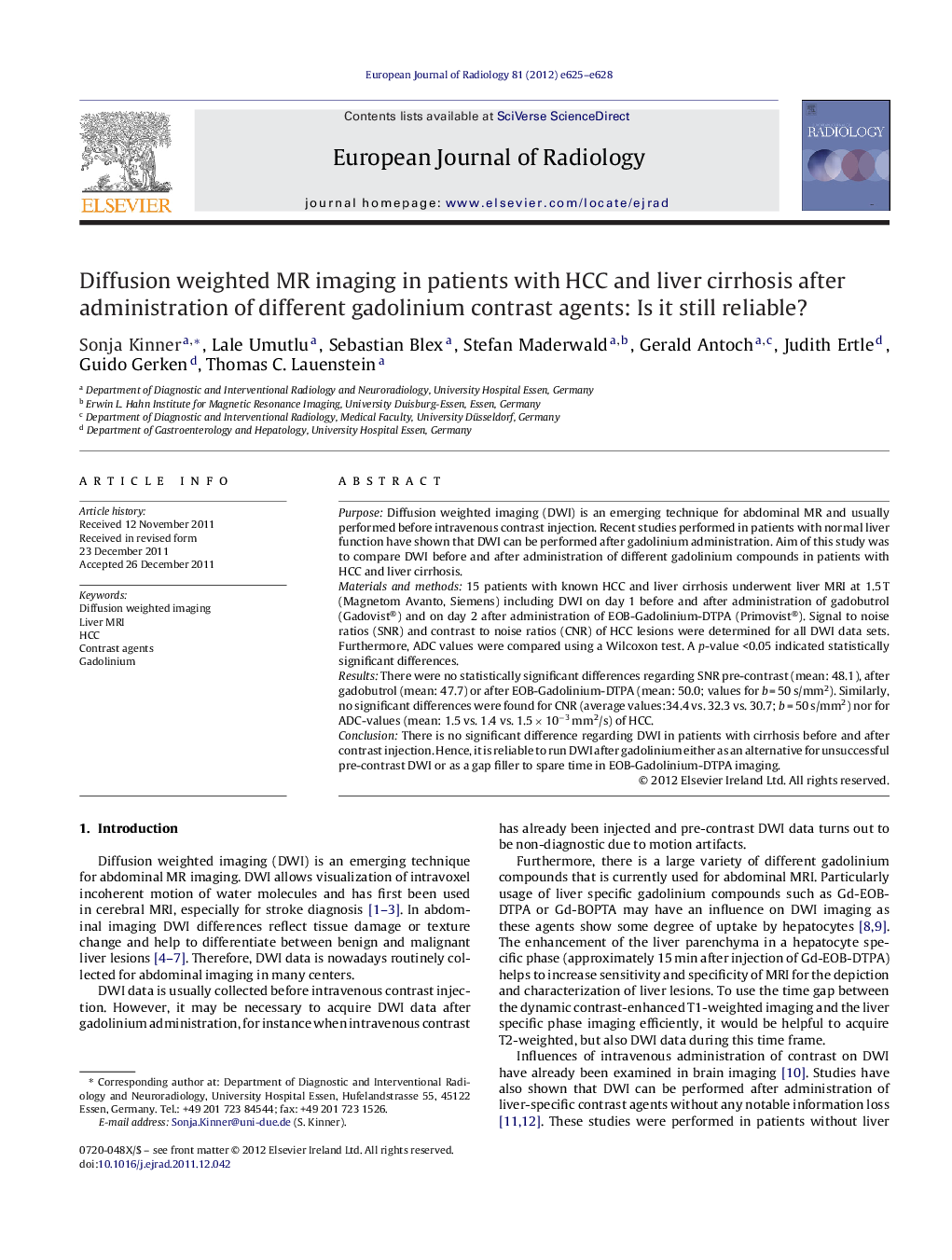| Article ID | Journal | Published Year | Pages | File Type |
|---|---|---|---|---|
| 6244530 | European Journal of Radiology | 2012 | 4 Pages |
PurposeDiffusion weighted imaging (DWI) is an emerging technique for abdominal MR and usually performed before intravenous contrast injection. Recent studies performed in patients with normal liver function have shown that DWI can be performed after gadolinium administration. Aim of this study was to compare DWI before and after administration of different gadolinium compounds in patients with HCC and liver cirrhosis.Materials and methods15 patients with known HCC and liver cirrhosis underwent liver MRI at 1.5 T (Magnetom Avanto, Siemens) including DWI on day 1 before and after administration of gadobutrol (Gadovist®) and on day 2 after administration of EOB-Gadolinium-DTPA (Primovist®). Signal to noise ratios (SNR) and contrast to noise ratios (CNR) of HCC lesions were determined for all DWI data sets. Furthermore, ADC values were compared using a Wilcoxon test. A p-value <0.05 indicated statistically significant differences.ResultsThere were no statistically significant differences regarding SNR pre-contrast (mean: 48.1), after gadobutrol (mean: 47.7) or after EOB-Gadolinium-DTPA (mean: 50.0; values for b = 50 s/mm2). Similarly, no significant differences were found for CNR (average values:34.4 vs. 32.3 vs. 30.7; b = 50 s/mm2) nor for ADC-values (mean: 1.5 vs. 1.4 vs. 1.5 Ã 10â3 mm2/s) of HCC.ConclusionThere is no significant difference regarding DWI in patients with cirrhosis before and after contrast injection. Hence, it is reliable to run DWI after gadolinium either as an alternative for unsuccessful pre-contrast DWI or as a gap filler to spare time in EOB-Gadolinium-DTPA imaging.
